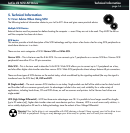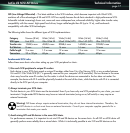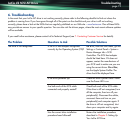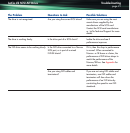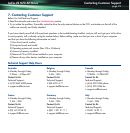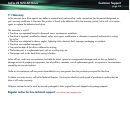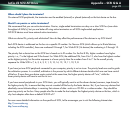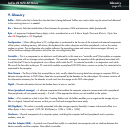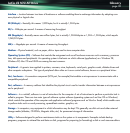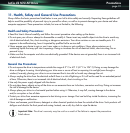
Appendix – SCSI Q & A
page 28
LaCie d2 SCSI AIT Drive
Where should I place the terminator?
On external SCSI peripherals, the terminator must be enabled (internal) or placed (external) on the last device on the bus.
Should I use passive or active terminators?
We recommend that you use active terminators. Passive, single-ended terminators are okay on a slow SCSI bus (max data
throughput of 5Mb/s), but you are better off using active terminators on all SCSI single-ended applications.
LVD SCSI devices must have external active terminators.
What are device IDs, priority and arbitration? How do they affect the performance of the devices in my SCSI chain?
Each SCSI device is addressed on the bus via a specific ID number. For Narrow SCSI (which allows up to 8 total devices,
including the SCSI controller), these are numbered 0 through 7; for Wide SCSI (16 devices) the numbering is 0 through 15.
The priority that a device has on the SCSI bus is based on its ID number. For the first 8 IDs, higher numbers have higher
priority: i.e., 7 is the highest and 0 the lowest. For Wide SCSI, the additional IDs, from 8 to 15, also have the highest number
as the highest priority; but the entire sequence is a lower priority than the numbers from 0 to 7. So the overall priority
sequence for Wide SCSI is 7, 6, 5, 4, 3, 2, 1, 0, 15, 14, 13, 12, 11, 10, 9, 8.
If you have just one SCSI peripheral connected to your computer, priority is not an issue. The priority levels are used to guide
the arbitration process. In a nutshell, arbitration is the process by which different devices decide which one can have control
of the bus. If more than one device wants control at the same time, the higher-priority device will "win," while the
lower-priority device will have to wait for its turn.
If you have several peripherals in your SCSI chain, you will typically want to set the slower devices (scanners, tape drives) to
the higher-priority IDs, to ensure that they are not crowded off the bus by the faster devices. But, if you have any devices that
absolutely cannot tolerate delays in receiving their stream of data –such as a CD-RW or a video encoder - they should be
given top priority on the bus. Many people also like to make the host adapter the highest-priority device on the bus, which is
why host adapters often have a default SCSI ID of 7.
For even more detailed information on the specifics of SCSI, LaCie encourages you to visit the following Internet sites:
http://www.scsita.org
http:/www.scsifaq.org



